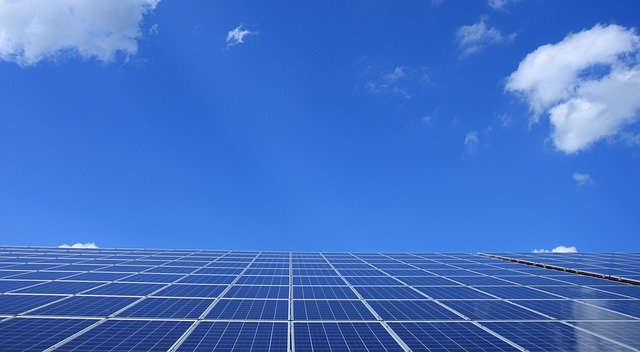China, the world’s largest carbon emitter, is on the cusp of a clean energy transition as new solar power becomes cheaper than coal throughout most of the country, according to a new study.
By 2023, China will have the capacity to deploy solar power nationwide at the same price as coal, and currently has that ability in three-quarters of the country, according to a joint study from Harvard, Tsinghua, Nankai and Renmin universities.
“Today subsidy-free solar power has become cheaper than coal power in most parts of China” in a trajectory spreading across the country, study coauthor Xi Lu said in a statement.
While the country is a long way from tapping that theoretical potential, the new research highlights “a crucial energy transition point” at which solar becomes a “cheaper alternative to coal-fired electricity and a more grid-compatible option,” said co-author Michael McElroy.
By 2060, the study found, China will have the capacity to meet 43 percent of its power needs with solar energy that costs less than 2.5 cents per kilowatt hour — less than half of China’s 2019 price for coal energy, and less than a quarter the current average U.S. energy cost.
That projection is much faster than previous studies, which researchers say failed to account for the way that China’s growing solar sector — which now represents a third of total global solar production — has benefited from technical advances and economies of scale.
The report comes ahead of the global climate summit in Scotland next month, where China’s plans to transition away from coal will be a major factor in the world’s ability to limit the rise in global temperatures to 1.5 degrees Celsius.
One key accelerant of China’s solar growth is the “cost of capital:” how much solar developers have to pay in interest or dividends to secure funding for new projects.
This number plummeted 63 percent in China between 2011 and 2018, even as government subsidies fell away, researchers said.
This fall was driven by the simultaneous development of photovoltaic (solar) power and battery storage technology in tandem with a growth of regulatory and technical know-how needed to integrate intermittent solar with electrical grids.
Another key factor is political: For China, decarbonization is a clear and pressing problem, as its ongoing reliance on coal power leads to “severe air pollution” events that are currently slashing Chinese life expectancies.
These political and economic changes have helped China shift away from coal power, though it still accounts for two-thirds of China’s energy mix as the country’s energy demands surged by 8.5 times between 1979 and 2019, the report found.
Coal energy contains ancient sunlight stored in the carbonized bodies of ancient plants — making it functionally an on-demand battery that has to be burned in a generator to create electricity.
Solar energy, by contrast, produces electricity immediately as photons hit photovoltaic solar panels, discharging electricity down a wire — making them in many ways a simpler addition than fossil fuels-energy to the electric grid.
Traditionally, the main challenge for solar has been storage: the grid cannot easily cope with the wide swings of solar energy, meaning that its lower generation costs and simpler tie-ins are offset by the need for new, higher-capacity battery technology.
But as of 2020, the report found, the Chinese industrial hothouse of solar and storage innovation has created “technical potential” to roll out enough new solar generation to meet twice the nation’s existing energy needs — from residential power to car traffic.
Headline updated at 2:53 p.m.
